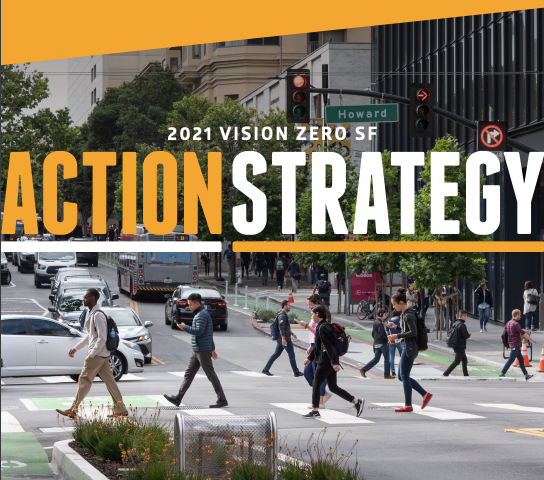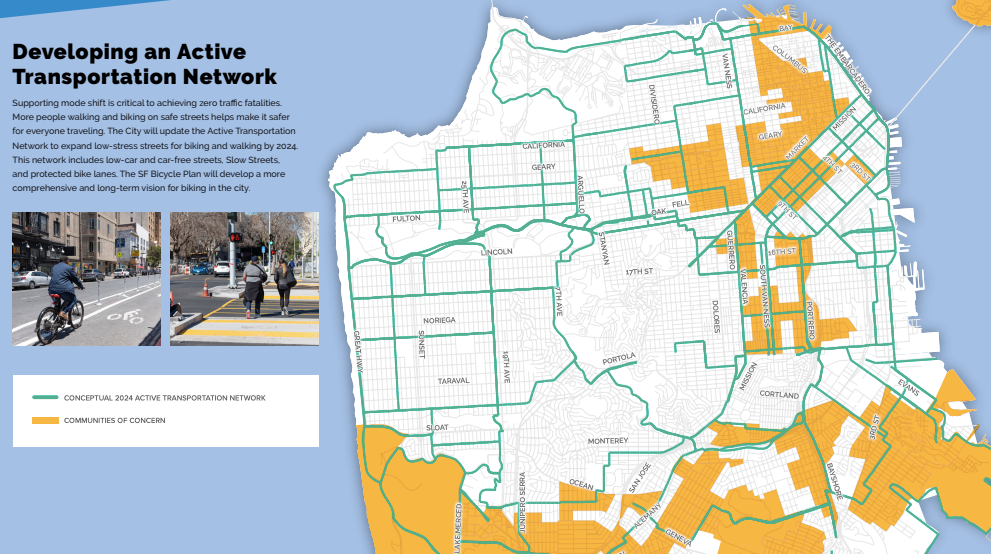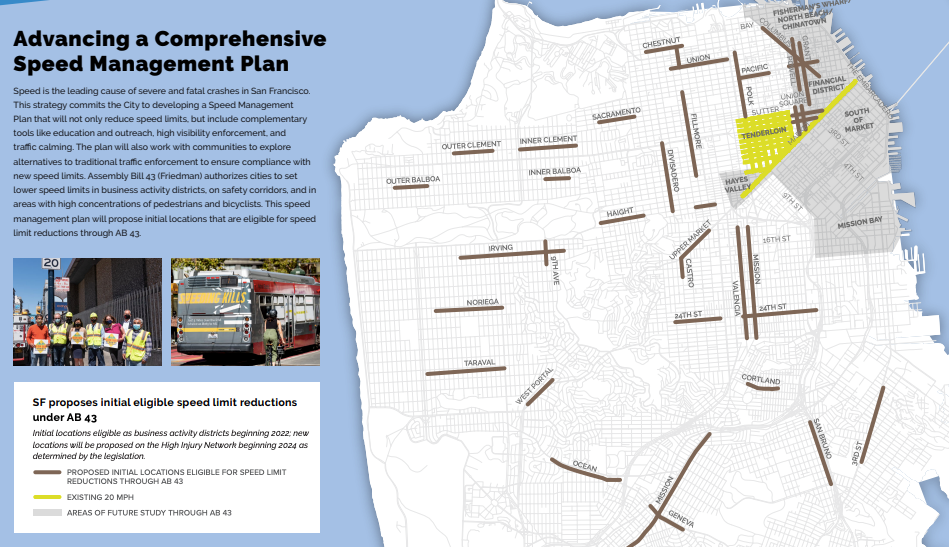By Ryan Reeves

This week, San Francisco Mayor London Breed released the 2021 Vision Zero Action Strategy—our City’s multi-agency framework for eliminating traffic deaths and reducing severe injuries.
The City and County of San Francisco committed to ending traffic fatalities through Vision Zero in 2014. Since then, our approach has continued to evolve – we've incorporated new strategies and expanded on existing and successful programs. In this updated plan, we commit to bold and ambitious strategies to create safer streets. We will double down on redesigns to make streets safer for people, and expand programs like our Vision Zero Quick-Build across the city’s High Injury Network (HIN), the 13% of city streets that account for more than 75% of severe and fatal injuries.
The Vision Zero Action Strategy lays out a clear path for the city towards this ambitious goal over the next three years. The strategy focuses on slowing speeds and safer crossings. More than 80 miles of our city’s High Injury Network have been upgraded or are in construction with core safety improvements. This strategy commits the City to expand the successful Quick-Build initiative to cover the remaining 80 miles in the High-Injury Network. As part of this effort, we are committed to adding daylighting and high-visibility crosswalks to every intersection along the HIN. We will also update all eligible signals to give pedestrians head-starts and more time for crossing the street. The strategy also commits us to updating our City’s Active Transportation Network, connecting car-light/car-free streets to protected bike lanes by 2024. Through these design changes, we can make walking, biking, and taking transit safer and more accessible for San Franciscans.

This strategy shows how policy change can make a significant impact in expanding our tools for safer streets. Under the recently passed AB43, which gives cities the authority to lower speed limits along certain corridors, San Francisco will begin implementing 20 mph zones along key streets as early as next year. We will also develop and implement a comprehensive speed management plan, including education and outreach to advance a culture of traffic safety. Lowering speeds by even 5 mph can make a significant difference for safety: We have seen from peer cities like Seattle that implementing 20 mph zones can decrease collisions by around 20%. We will also continue to push for policies like congestion pricing that incentivize mode shifts away from driving and toward active transportation and public transit.

As we begin to implement the new Vision Zero Action Strategy, we are keeping equity core to our focus. The Vision Zero HIN is disproportionately concentrated in San Francisco’s communities of color, and vulnerable people—including seniors, people with disabilities, unhoused populations, and people of color—face the greatest risks from traffic-related injuries and deaths. Our Action Strategy prioritizes these communities in engagement, education, and implementation of Vision Zero programs. This past year, we rolled out 20 mph speed limits throughout the Tenderloin, where every street is on the High Injury Network. We are also focused on pursuing legislative authority for new strategies, like speed safety cameras, that are effective in reducing crashes and can reduce racial bias and disparities in enforcement.
This updated strategy commits to bold and ambitious action to get us closer to zero traffic deaths. But to achieve Vision Zero for San Francisco, we know we need the full force of comprehensive policy change, political buy-in, and community support. We need a citywide investment toward lasting, monumental change for our streets. Getting to Vision Zero will take sustained, cross-cutting, and continually innovating action. We’re committed to ending traffic deaths and reducing severe injuries in the city—and will work urgently to save lives on our streets.
Published November 18, 2021 at 02:07PM
https://ift.tt/3CqMNq5
